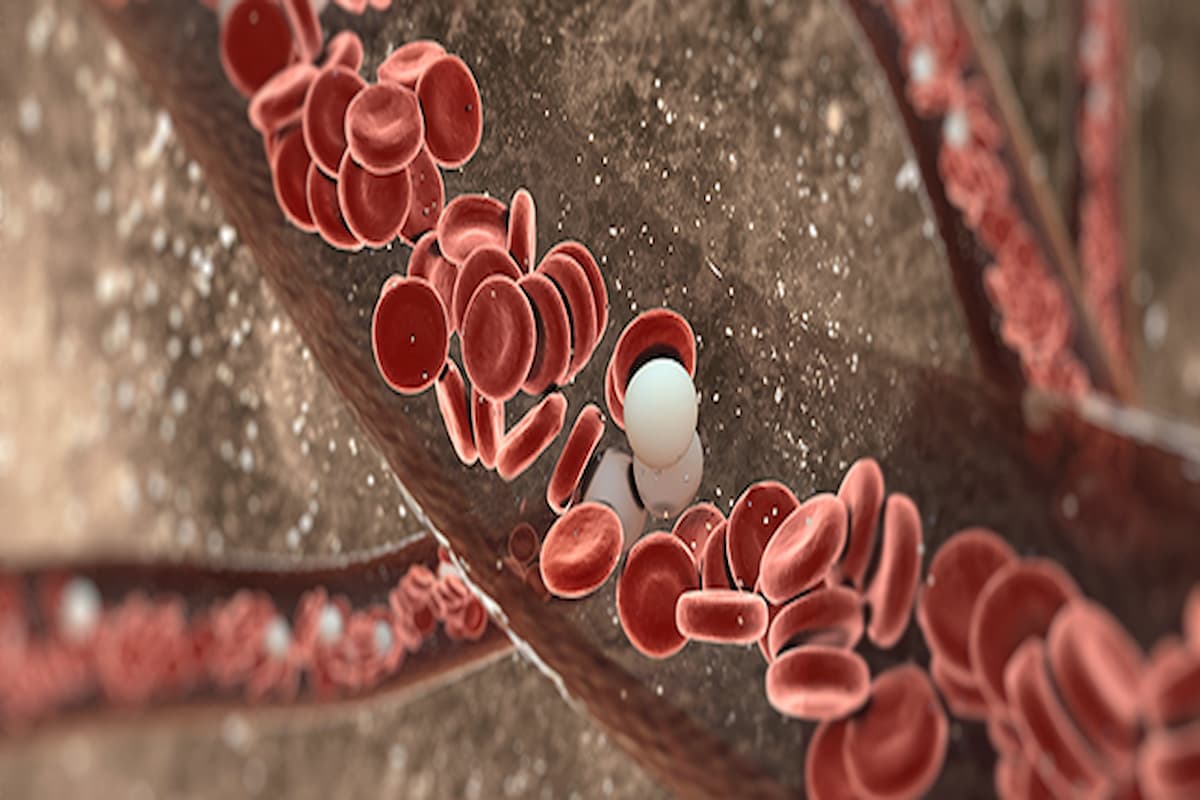MRD-Directed Ibrutinib Combo Improves PFS in Chronic Lymphocytic Leukemia
Measurable residual disease–guided ibrutinib plus venetoclax in chronic lymphocytic leukemia appears to be particularly beneficial in patients with unmutated IGHV and specific genetic abnormalities.
“In this trial, MRD-guided ibrutinib/venetoclax, including individualized treatment duration beyond undetectable MRD, resulted in significant improvement in [PFS] and an apparent benefit with respect to [OS] among patients with previously untreated CLL,” according to the study authors.

Combination therapy with ibrutinib (Imbruvica) and venetoclax (Venclexta) guided by measurable residual disease (MRD) significantly improved progression-free survival (PFS) compared with fludarabine plus cyclophosphamide and rituximab (Rituxan; FCR) in patients with chronic lymphocytic leukemia (CLL), according to findings from the phase 3 FLAIR trial (ISRCTN01844152) published in New England Journal of Medicine.
The estimated PFS rate at 3 years was 97.2% (95% CI, 94.1%-98.6%) in the ibrutinib/venetoclax arm compared with 76.8% (95% CI, 70.8%-81.7%) in the FCR arm (HR, 0.13; 95% CI, 0.07-0.24; P <.001). Additionally, PFS outcomes appeared to improve with the experimental combination among those without IGHV mutations (HR, 0.07; 95% CI, 0.02-0.19) but not those with IGHV-mutated disease (HR, 0.54; 95% CI, 0.21-1.38).
Ibrutinib/venetoclax and FCR, respectively, yielded a 3-year overall survival (OS) rate of 98.0% (95% CI, 95.2%-99.2%) and 93.0% (95% CI, 88.9%-95.6%; HR, 0.31; 95% CI, 0.15-0.67). Investigators highlighted a more pronounced OS benefit with ibrutinib/venetoclax in those without IGHV mutations (HR, 0.23; 95% CI, 0.06-0.81) compared with those who had IGHV-mutated CLL (HR, 0.61; 95% CI, 0.20-1.82).
In the ibrutinib/venetoclax and FCR arms, respectively, undetectable MRD in bone marrow at 2 years was highlighted in 52.4% (95% CI, 45.9%-58.9%) vs 49.8% (95% CI, 43.2%-56.5%) and 65.9% (95% CI, 59.5%-72.3%) vs 49.8% (95% CI, 43.2%-56.5%) at 5 years. Additionally, the rates of undetectable MRD in peripheral blood were 47.5% (95% CI, 41.2%-53.7%) vs 66.0% (95% CI, 60.0%-72.1%) at 1 year and 92.7% (95% CI, 88.1%-97.3%) vs 67.9% (95% CI, 61.9%-73.9%) at 5 years.
“In this trial, MRD-guided ibrutinib/venetoclax, including individualized treatment duration beyond undetectable MRD, resulted in significant improvement in [PFS] and an apparent benefit with respect to [OS] among patients with previously untreated CLL,” the study authors wrote. “Benefits appeared to be particularly marked in patients who tend to have poorer outcomes with standard treatments [e.g., those with unmutated IGHV and certain genetic abnormalities].”
Investigators of the multi-center, open-label FLAIR trial randomly assigned 523 patients to receive ibrutinib plus venetoclax (n = 260) or FCR (n = 263). Patients were also randomly assigned to receive ibrutinib monotherapy; findings in this arm were reported in a previous interim analysis.
Patients received ibrutinib orally at 420 mg once a day for 8 weeks before beginning venetoclax at up to 400 mg once a day, with combination therapy continuing for 6 years unless MRD stopping rules were reached or disease progression or unacceptable toxicity was reported. Patients in the FCR arm received treatment every 4 weeks for 6 cycles.
The trial’s primary end point was PFS in the ibrutinib/venetoclax and FCR arms. Secondary end points included OS, undetectable MRD, response to therapy, safety, and health-related quality of life.
Patients with previously untreated CLL or small lymphocytic lymphoma who were considered fit to receive treatment with FCR were able to enroll on the trial. Those with Richter’s transformation, central nervous system involvement, or symptomatic cardiac disease were ineligible for enrollment.
The median patient age was 62 years in the ibrutinib/venetoclax (interquartile range [IQR], 55-67) and FCR arms (IQR, 57-67). Most patients in each respective arm were male (71.5% vs 71.1%), White (89.6% vs 91.3%), had a World Health Organization performance status of 0 (69.6% vs 68.8%), and had IGHV-unmutated disease (47.3% vs 52.5%).
The overall response rate was 86.5% (95% CI, 81.8%-90.4%) for patients who received ibrutinib/venetoclax and 76.4% (95% CI, 70.8%-81.4%) among those who were treated with FCR. Additionally, a complete response occurred in 59.2% (95% CI, 53.0%-65.3%) and 49.0% (95% CI, 42.9%-55.3%) of patients in each respective arm.
The most common grade 3 to 5 adverse effects (AEs) in the ibrutinib/venetoclax and FCR arms, respectively, included neutropenia (10.3% vs 47.3%), anemia (0.8% vs 15.5%), and thrombocytopenia (2.0% vs 10.0%). AEs related to hypertension affected 13.5% and 1.7% of patients in each respective arm, and AEs involving arrhythmia or atrial fibrillation occurred in 13.5% and 1.7%.
Investigators reported toxicity leading to death in 8 patients in the ibrutinib/venetoclax arm and 23 in the FCR arm; deaths that were deemed as potentially related to study treatment occurred in 1 and 6 patients from each respective arm. Additionally, 24 secondary cancers developed in 17 patients who received ibrutinib/venetoclax compared with 45 secondary cancers that developed in 34 patients who were treated with FCR.
Reference
Munir T, Cairns DA, Bloor A, et al. Chronic lymphocytic leukemia therapy guided by measurable residual disease. N Engl J Med. 2024;390:326-337. doi:10.1056/NEJMoa2310063
Newsletter
Stay up to date on recent advances in the multidisciplinary approach to cancer.